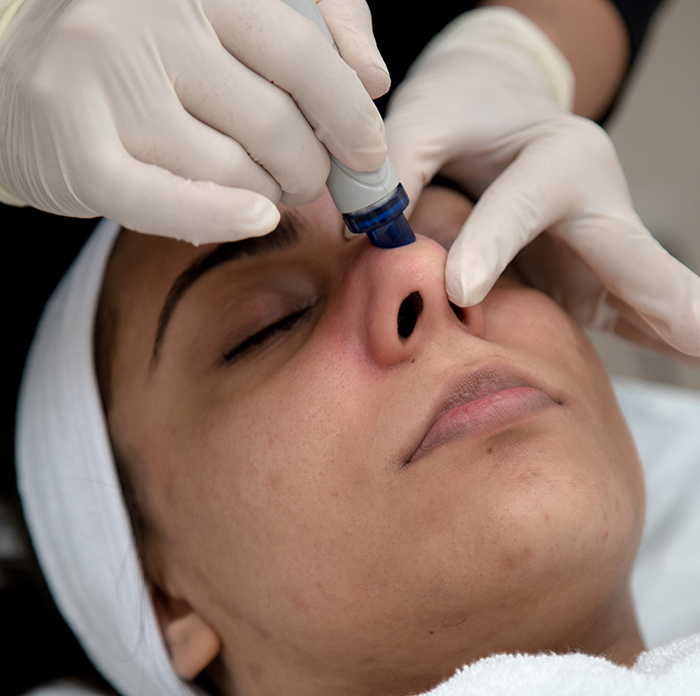Introduction:
In the realm of skincare, achieving a radiant complexion often involves exploring various treatments that cater to different skin concerns. Among these, Hydrafacial and Microdermabrasion have gained popularity as effective methods for revitalizing the skin. This comprehensive guide aims to delve into the specifics of these treatments, highlighting their benefits, techniques, and differences.
Understanding Hydrafacial Treatment:
Hydrafacial is a multi-step, non-invasive facial treatment designed to cleanse, exfoliate, extract impurities, and hydrate the skin simultaneously. This advanced treatment utilizes a patented device that delivers a blend of serums and solutions, tailored to address specific skincare needs.

Exploring the Steps and Benefits of Hydrafacial:
- Cleansing and Exfoliation: The Hydrafacial process begins with gentle cleansing and exfoliation to remove dead skin cells and unclog pores, preparing the skin for further treatment.
- Extraction and Hydration: Using a vacuum-based tip, Hydrafacial extracts debris from pores while simultaneously infusing the skin with hydrating serums, antioxidants, and peptides for nourishment.
- Rejuvenation and Protection: The final step involves saturating the skin's surface with antioxidants and peptides to promote a youthful glow and protect against environmental damage.
Understanding Microdermabrasion Treatment:
Microdermabrasion is a non-invasive exfoliating treatment that uses a handheld device to gently sand away the outer layer of the skin, revealing a smoother and more even complexion. This procedure aims to improve skin texture, reduce fine lines, and diminish the appearance of blemishes.
Exploring the Technique and Benefits of Microdermabrasion:
- Exfoliation Process: During Microdermabrasion, a diamond-tipped wand or crystals is used to exfoliate the skin's outer layer, stimulating cell turnover and promoting the growth of new, healthier skin cells.
- Reduction of Skin Imperfections: This treatment is effective in reducing the appearance of acne scars, hyperpigmentation, fine lines, and uneven skin tone, leading to a more radiant complexion.

Comparing Hydrafacial and Microdermabrasion Treatments:
- Technique and Mechanism: Hydrafacial combines cleansing, exfoliation, extraction, and hydration in one treatment using a specialized device, while Microdermabrasion focuses primarily on exfoliation using abrasive tools or crystals.
- Intensity and Downtime: Hydrafacial is gentler and involves minimal discomfort, making it suitable for various skin types with no downtime. Microdermabrasion may cause slight redness and may require a short recovery period depending on the skin's sensitivity.
Conclusion:
Both Hydrafacial and Microdermabrasion treatments offer unique approaches to achieving smoother, rejuvenated skin. Hydrafacial excels in providing a comprehensive, hydrating, and multi-step facial experience, catering to specific skin concerns with minimal discomfort. On the other hand, Microdermabrasion focuses primarily on exfoliation, making it an excellent choice for addressing skin texture issues and imperfections. Consulting with skincare professionals can help individuals determine the most suitable treatment based on their skin goals and concerns, ultimately leading to a revitalized and refreshed complexion.






Comments